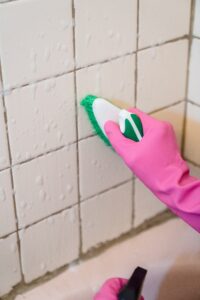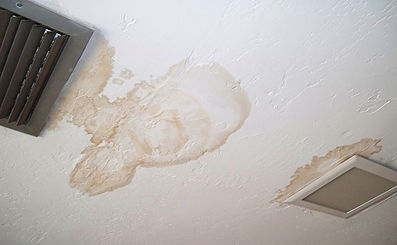Tips to Identify and Repair Stains from Water Efficiently
Tips to Identify and Repair Stains from Water Efficiently
Blog Article
Right here down the page you will find some sensible resources around How to Find and Repair Water Leaking in the Wall.

Water discolorations on wall surfaces are not pleasant to the eyes. Your house needs to be without stains on the wall surfaces, roofing, or floors. That is the optimal state of a home and its structures. Sometimes it seems virtually inevitable to experience water stains on walls in residences.
Homeowners living in humid areas continuously deal with the fear of water spots on wall surfaces. With exact and all-round information on the reasons of water discolorations and also timely fixing procedures, you will certainly constantly be an action ahead of such incidents.
3 Typical Causes of Water Discolorations on Walls
Contrary to popular belief, water stains on walls do not always stem from poor structure materials. There are several root causes of water discolorations on walls. These include:
Poor Drain
This will avoid water from leaking right into the wall surfaces. This links to extreme wetness that you discover on the walls of your building.
So, the leading source of wet wall surfaces, in this case, can be a poor drain system. It can additionally be due to bad management of sewer pipes that go through the structure.
Damp
When hot wet air meets with completely dry cool air, it causes water beads to form on the walls of buildings. When there is heavy steam from food preparation or showers, this happens in kitchens as well as shower rooms. The water beads can discolor the surrounding walls in these parts of your house and also spread to other areas.
Moist or condensation affects the roofing system and also wall surfaces of structures. This creates them to show up darker than other locations of the home. When the wall is wet, it produces an appropriate setting for the development of germs and also fungi. These may have damaging effects on health, such as allergies and also respiratory system problems.
Pipe Leaks
Most residences have a network of water pipes within the walls. It constantly boosts the viability of such pipes, as there is little oxygen within the walls.
A disadvantage to this is that water leak influences the walls of the building as well as triggers widespread damage. An indicator of faulty pipelines is the appearance of a water tarnish on the wall surface.
Water Stains on Wall Surface: Fixing Tips
When dealing with water discolorations, property owners would usually desire a fast repair. They would soon understand this is detrimental as the water discolorations persist. Right here are a few practical tips that will certainly direct you in the repair work of water stains on wall surfaces:
Pro Idea
A houseplant in your home likewise increases its humidity. If the residence is currently moist, you may desire to present houseplants with marginal transpiration. An instance of ideal houseplants is succulents.
Final thought
No one desires to have water stains on wall surfaces in their home, it can take place to the finest of us. This short article offers you take advantage of, as you now recognize just how to handle this mishap if it does happen.
It is always best to hire expert services to assist fix the problems in your home.
Sometimes it seems practically inevitable to experience water stains on walls in houses.
In contrast to popular belief, water discolorations on wall surfaces do not constantly stem from bad structure materials. There are a number of reasons of water stains on wall surfaces. The water beads can tarnish the surrounding wall surfaces in these parts of your house and also spread to other areas.
Below are a couple of useful pointers that will assist you in the repair of water spots on wall surfaces:
How to Remove Water Stains From Your Walls Without Repainting
The easy way to get water stains off walls
Water stains aren’t going to appear on tile; they need a more absorbent surface, which is why they show up on bare walls. Since your walls are probably painted, this presents a problem: How can you wash a wall without damaging it and risk needing to repait the entire room?
According to Igloo Surfaces, you should start gently and only increase the intensity of your cleaning methods if basic remedies don’t get the job done. Start with a simple solution of dish soap and warm water, at a ratio of about one to two. Use a cloth dipped in the mixture to apply the soapy water to your stain. Gently rub it in from the top down, then rinse with plain water and dry thoroughly with a hair dryer on a cool setting.
If that doesn’t work, fill a spray bottle with a mixture of vinegar, lemon juice, and baking soda. Shake it up and spray it on the stain. Leave it for about an hour, then use a damp cloth to rub it away. You may have to repeat this process a few times to get the stain all the way out, so do this when you have time for multiple hour-long soaking intervals.
How to get water stains out of wood
Maybe you have wood paneling or cabinets that are looking grody from water stains too, whether in your kitchen or bathroom. Per Better Homes and Gardens, you have a few options for removing water marks on your wooden surfaces.
You can let mayonnaise sit on your stain overnight, then wipe it away in the morning and polish your wood afterward. You can also mix equal parts vinegar and olive oil and apply to the stain with a cloth, wiping in the direction of the grain until the stain disappears. Afterward, wipe the surface down with a clean, dry cloth. Try placing an iron on a low heat setting over a cloth on top of the stain. Press it down for a few seconds and remove it to see if the stain is letting up, then try again until you’re satisfied. (Be advised that this works best for still-damp stains.) https://lifehacker.com/how-to-remove-water-stains-from-your-walls-without-repa-1849742925

We hope you enjoyed our part on . Thank you so much for finding the time to browse our short article. Feel free to take the opportunity to promote this article if you enjoyed it. Thanks a lot for your time spent reading it.
Effective solutions await. Report this page